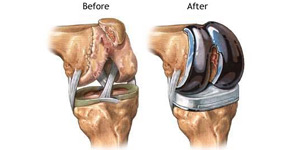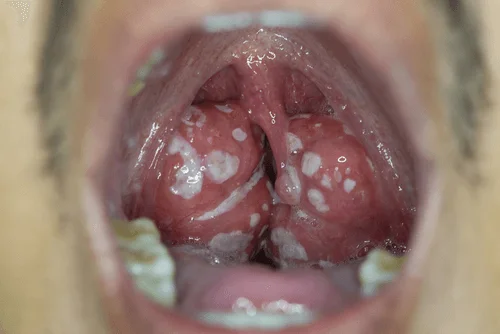Snapping Elbow Syndrome
Snapping elbow syndrome, also called snapping triceps syndrome, is characterized by a snapping sensation, irritation or displacement reactions, and pain and inflammation from a dislocated triceps muscle portion of the ulnar nerve inside the cubital tunnel.
In this dynamic state, an abrupt active or passive movement may happen when the elbow is flexed or extended. The symptoms are often more noticeable when engaging in athletic exercises, such as push-ups and weightlifting.
Table of Contents
What is a snapping elbow?
Because of its auditory characteristic, this rare disorder is sometimes mistaken for more common ones like tennis elbow and golfer’s elbow. It is called “snapping elbow.” During flexion and extension movements, the elbow joint makes a “popping” or “clicking” sound.
What are the symptoms of a snapping elbow?
Symptoms include:
- Click or pop sound
- Inner elbow pain
- The ring and little fingers may become numb or develop pins and needles sensations.
- Arm stiffness
What causes snapping elbow?
Potential causes are broad, some of which include:
- Medial elbow instability refers to subluxation of either the triceps brachii or the ulnar nerve.
- Lateral ligament instability refers to injury to the annular ligament, meniscus, or synovium.
Diagnosis
One of the most difficult disorders to diagnose is snapping elbow syndrome. Most of the time, testing yields normal results. As was already noted, it is also among the most frequently misdiagnosed disorders.
- Physical examination and medical history: let your doctor know about any possible activities, such as sports, exercise, or trauma, that could have contributed to your injury. A physical examination, such as the elbow flexion test, can also determine how much damage has been done to the affected area.
- Ultrasound or magnetic resonance imaging (MRI): Dynamic ultrasonography or MRI may help identify possible damage to the nerve, as well as the medial or lateral ligaments. During an arthroscopy procedure, a small camera is inserted into the elbow joint to provide a precise image of the affected elbow joint’s state.
Treatment
If early detection occurs, conservative treatment is considered. However, in certain cases of elbow fraud, surgery became the only way to resolve the problem completely.
Treatment options include:
- The rut of the bracket/tire/sling: It will be proposed to provide the affected area with the opportunity to heal and rest. The patient will also be advised to stop all activities and observe complete physical rest to ensure the greatest opportunity for speedy recovery.
- An ice bag or a hot water bag to reduce pain
Exercises For Snapping Elbow Syndrome:
1. Elbow flexion and wrist extension:
The goal is to restore the ulnar nerve and elbow muscles.
How to: Position the patient’s arm extended laterally, with the palm facing downward. Flex the patient’s wrist upward, then bend your elbow while bringing your hand to your shoulder. Repeat gently.
2. Head Tilt: Targets the ulnar nerve.
Stretch your palm and stabilize your elbow. Raise the patient’s head from your hands. Feel the strain. Extend your fingers to enhance the stretch. And then repeat.
3. The ulnar nerve and the forearm muscles are activated by front-of-body arm flexion.
Extend your arm straight in front of you. Extend your hand down. flexed the patient’s elbow and brought your wrist to your face. and then repeat.
4. Target: Muscles involved in forearm rotation (supination and pronation).
How to: Sit with the patient’s elbows not fully extended, rotate the patient’s right forearm in two directions: downward (pronation) and upward (supination). Please do it again.
5. Wrist Extension and Flexion movement: This exercise helps to build stronger wrist joint and elbow muscles and tendons.
You should place your palm on the table’s corner while sitting with your forearm resting on the table. Lower yourself back to your starting position after raising your wrist as high as the patient can.. Please do it again
6. Hammer Elbow Flexion and Extension: This exercise helps strengthen the elbow joint and forearm muscles.
Instructions: Hold the patient’s palm down while holding a small hammer or similar tool. Concentrate on the movement and feel for any clicking or cracking. Adjust the range of motion to the patient’s comfort position.
7. Massage Ball for Tendon Release: This technique targets the muscles and tendons surrounding the elbow.
Use a massage ball or similar instrument to provide pressure to the tendons and muscles surrounding the elbow, focusing on the area where the snapping occurs. Maintain pressure or gradually slide the ball along the muscle and tendon.
- Arthroscopic surgery: Elbow arthroscopy is often a prerequisite for this procedure. The elbow nerve may be transferred anteriorly, the PLICA may be ruptured (tissue removed), or the capsule tissues may be weakened.
- Anti-inflammatory drugs to reduce edema
- Anesthesia reduces pain
- Surgery is recommended for the treatment of complex cases, including the release of entangled elbow nerves and their movement towards the anterior surface of the elbow, as well as the cutting and reattachment of the tendon.
- You might think about the typical healing period of four to five months.
FAQ’s
What leads to elbow snapping?
What causes the elbow to snap? There are many possible reasons, some of which are as follows: The medial side of the elbow can become unstable due to either the triceps tendon or the ulnar nerve dislocation.
How can a clicking elbow be fixed?
Your doctor may recommend the following based on your needs:
Get some rest.
Ice.
compression.
A brace to help support the elbow injury.
Medications that reduce inflammation.
Injections into the joints.
Is elbow popping a typical occurrence?
Elbow popping or clicking sounds are typical, especially if you’re older, an athlete, or undertake heavy work. Chronic, regular popping and cracking sounds may indicate a more serious condition, although painless elbow popping is just air passing through joints.
How can I prevent joints from breaking?
Dr. Theosmy says that being active is the greatest way to prevent clicking or popping in your joints. Your joints will remain strong if you exercise regularly. If you have osteoarthritis, exercise—especially low-impact exercises—can also help minimise bone loss, lower inflammation, and limit cartilage degradation.
How may elbow locking be prevented?
Among the nonsurgical treatment options is physical therapy. The symptoms may be lessened by performing certain activities that strengthen the muscles surrounding the elbow joint.
change in activity. Reducing pain-causing or unstable activities might also help alleviate symptoms.
Is snapping elbow syndrome common?
A rare condition known as “skipping” or “snapping” elbow syndrome causes discomfort in the posterior-medial elbow region and can occasionally be exacerbated by ulnar nerve damage. The improper insertion of the medial triceps head over the medial epicondyle during flexion and extension motions is one of the causes.
References:
- Snapping elbow. (n.d.). https://www.artisanorthopaedics.sg/conditions/elbow/snapping-elbow.
- Snapping ulnar nerve | Elbow conditions | Dr. Chris Ahmad. (n.d.). Dr. Christopher S Ahmad. https://www.drahmadsportsmedicine.com/expertise/elbow/snapping-ulnar-nerve/







